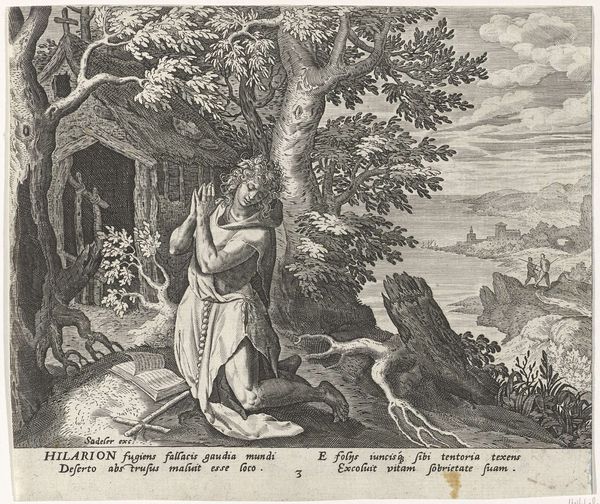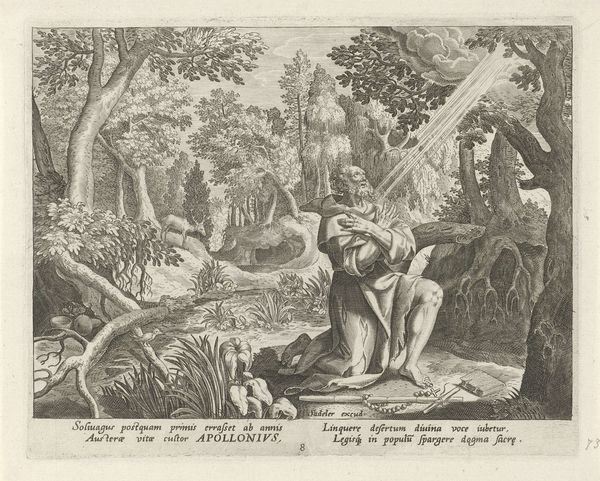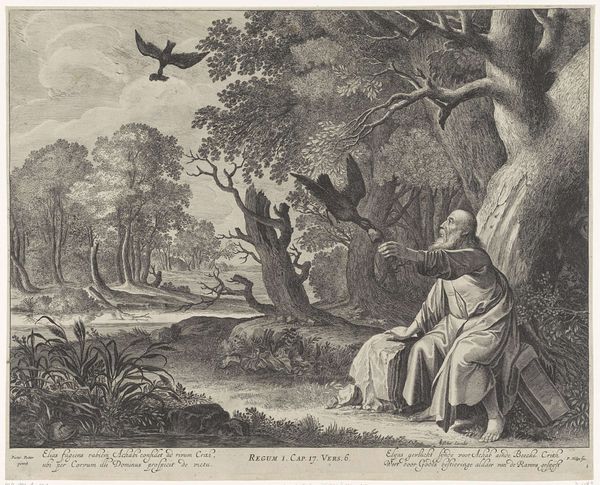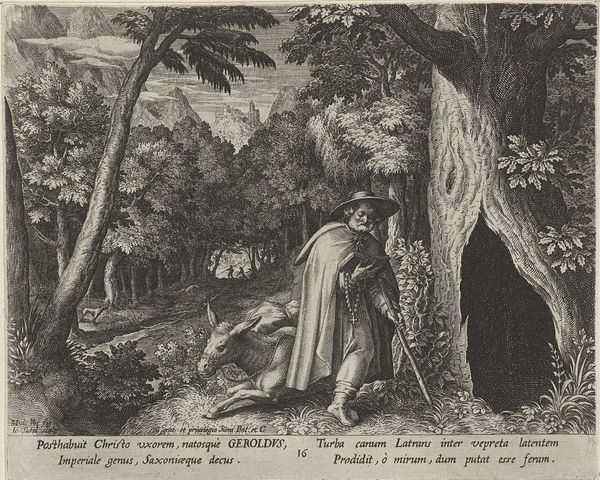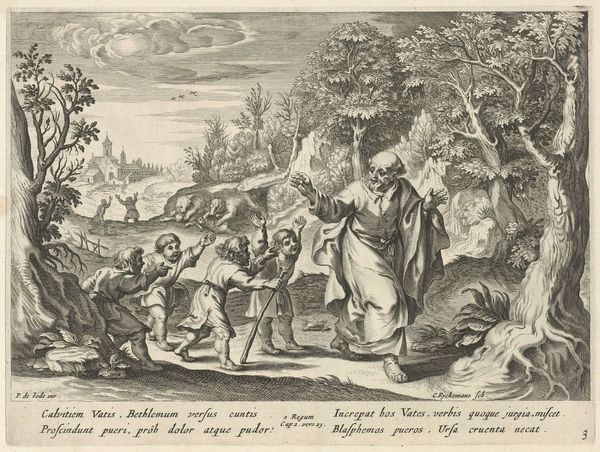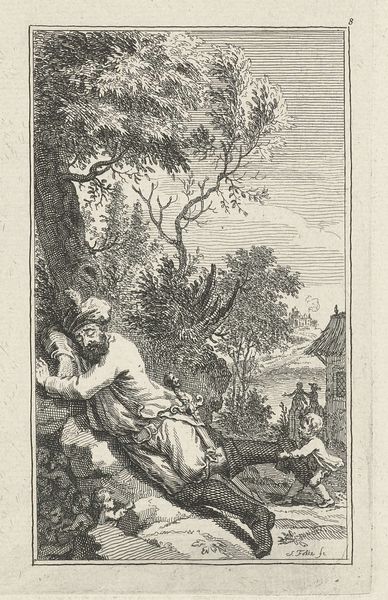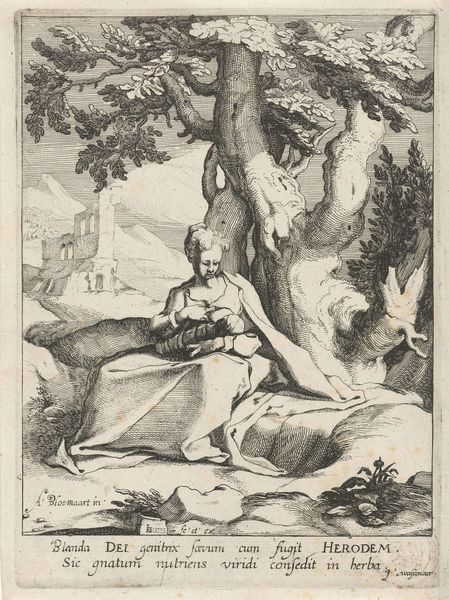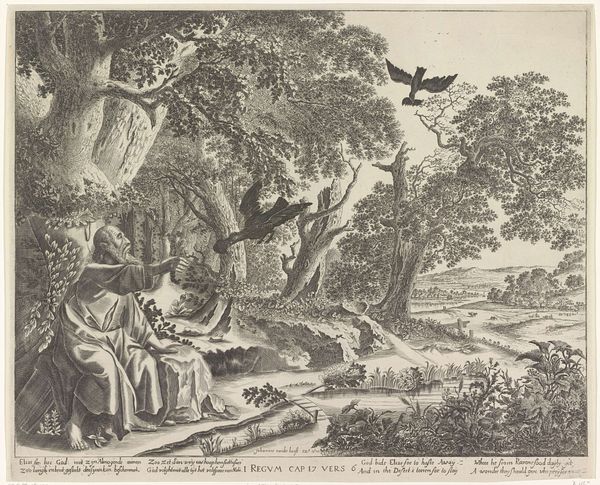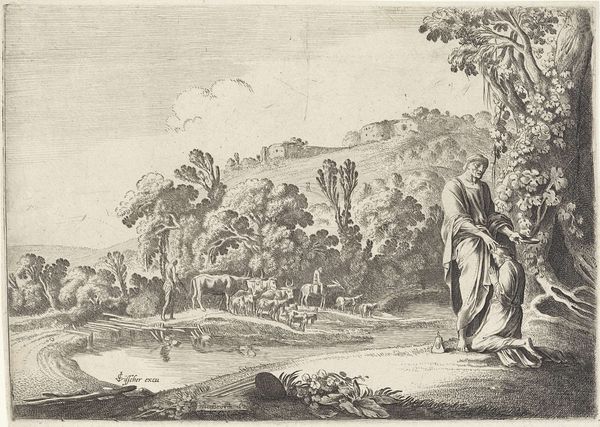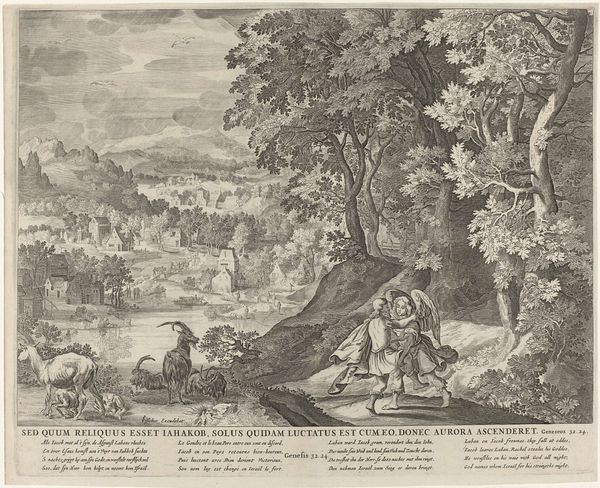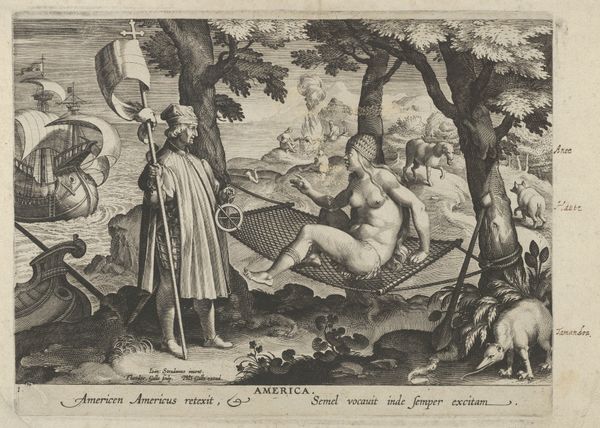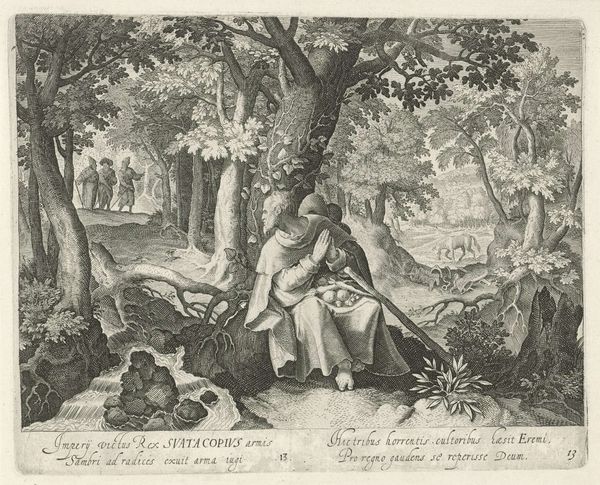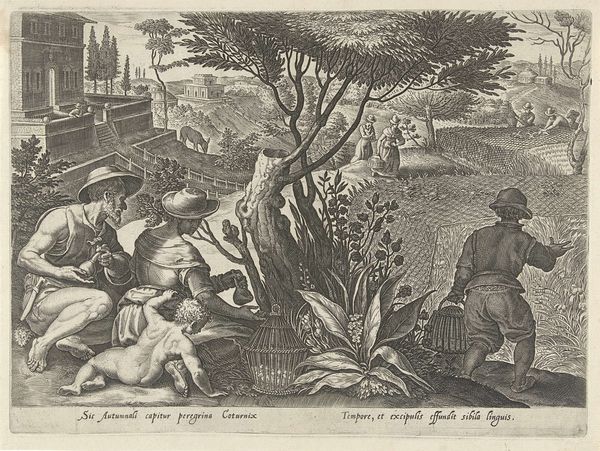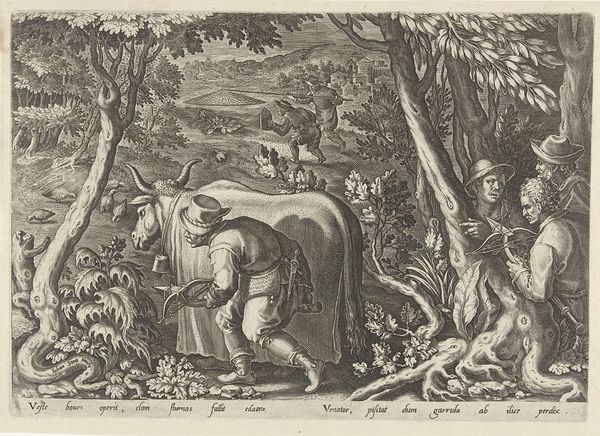
print, engraving
#
portrait
#
baroque
# print
#
landscape
#
figuration
#
engraving
Dimensions: height 172 mm, width 201 mm
Copyright: Rijks Museum: Open Domain
Curator: Take a moment to consider this engraving, "H. Franciscus," created sometime between 1601 and 1652 by Jan van Londerseel. Editor: It has such a serene and melancholic feel to it. The stark black lines against the pale paper give it a real weight, almost like looking into a dream or a faded memory. Curator: Absolutely. Londerseel masterfully utilizes the print medium to blend portraiture and landscape, both styles very typical of the Baroque. Here, Francis kneels in prayer as the beautiful idyllic landscape expands into the horizon behind him. Editor: It's interesting that the figure of Francis is presented to us in the forefront; look at his weathered face and rough garments, while that backdrop is like a world he's simultaneously a part of, yet removed from. Are those...stigmata on his feet? Curator: Indeed! The inscription includes "Ego Stigmata," which points us to St. Francis's reception of Christ's wounds. Notice how his hands are positioned—a powerful echo of crucifixion imagery. He's a bridge between earthly and divine realms, in this composition. Editor: I see that! He's sort of hunched over in what looks like penitence... all these sharp contrasts create this tense but captivating image. The way the landscape behind him dissolves is interesting. Why not present it in clear definition like they do the details of St Francis? Curator: By blurring the background, Londerseel directs our focus to the Saint and perhaps suggests the more transient nature of earthly things compared to Francis's spiritual devotion. It's a study in contrasts, using a very common figure throughout art history as the centerpiece. The Baroque period was rife with explorations into complex symbolism! Editor: Yes, and I love how he is connected visually and spiritually to the surrounding nature and open sky above him. This isn't some grand church; his devotion finds meaning in quiet, personal reflection out in what looks like an ordinary countryside setting. It's rather profound to be frank. Curator: Precisely. It’s a contemplative work that rewards careful observation. I'm really taken by how a seemingly simple image can carry so many layers of cultural and historical context. Editor: And it's these symbols and nuances that reveal deeper meanings within. Beautiful. It makes one consider what parts of their own landscapes contribute to our being!
Comments
No comments
Be the first to comment and join the conversation on the ultimate creative platform.
